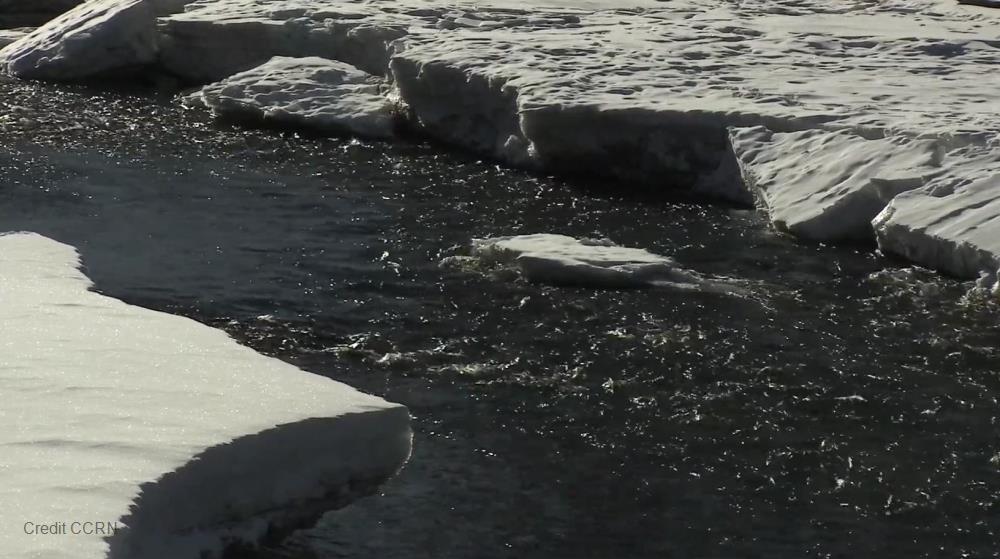
Related items loading ...
Section 1: Publication
Publication Type
Conference Poster
Authorship
Bertoncini, A., Thériault, J. M., Pomeroy, J.
Title
Establishing Reflectivity-Snowfall Relationships for Different Hydrometeor Particle Size Distributions in the Fortress Mountain Snow Laboratory
Year
2022
Publication Outlet
AOSM2022
DOI
ISBN
ISSN
Citation
Bertoncini, A., Thériault, J. M., Pomeroy, J. (2022). Establishing Reflectivity-Snowfall Relationships for Different Hydrometeor Particle Size Distributions in the Fortress Mountain Snow Laboratory. Proceedings of the GWF Annual Open Science Meeting, May 16-18, 2022.
Abstract
Accurate estimation of precipitation fields remains a grand challenge in cold regions hydrology due to the sparseness of precipitation gauges and lack of quantitative precipitation estimation from ground based weather radars. It is even more challenging in cold regions mountains due to blockage of ground based weather radars, and the complexity of modelling precipitation. Satellite remote sensing provides an alternative to precipitation monitoring in complex terrain when retrieval algorithms are able to represent a range of hydrometeor types. The Global Precipitation Measurement (GPM) satellite constellation has been successfully monitoring liquid precipitation since early 2014 through the Integrated Multi-SatellitE Retrievals for GPM (IMERG) algorithm. IMERG uses a constellation of satellites with passive microwave and infrared sensors to estimate precipitation, which is intercalibrated using GPM’s core platform Dual-frequency Precipitation Radar (DPR). The DPR sensor has been working efficiently to retrieve liquid precipitation because reflectivity-rainfall relationships are well established due to a more uniform Particle Size Distribution (PSD); however, DPR’s snowfall retrieval has been suboptimal because of the diversity of PSDs, especially in complex terrain. For example, the same radar reflectivity can represent differing precipitation rates for different PSDs. Therefore, proper PSD-specific reflectivity-snowfall (Z-S) relationships need to be established to improve the accuracy of DPR’s snowfall retrievals and, consequently, IMERG precipitation estimates. This study aims to develop PSD-specific Z-S relationships to improve satellite snowfall estimates in the complex terrain of the Fortress Mountain Snow Laboratory, Canadian Rockies, Alberta. Observations from instruments located between 2100 and 2310 m above sea level included a Parsivel-2 optical disdrometer to determine hydrometeor phase and PSD at ~ 3 m above the surface; a Micro Rain Radar-2 (MRR-2) to establish Z-S relationships for each classified PSD at the near-surface and at different levels of the atmosphere; and a network of Alter-shielded weighing precipitation gauges, including one next to the Parsivel-2 and MRR-2, to quantify the precipitation rate used on the Z-S relationship equations. The study period comprises matching Parsivel-2 and MRR-2 observed events during the Storms Across the Continental Divide Experiment (SPADE), April-June 2019, and between January 2020 and March 2022. Preliminary results during SPADE events indicate that snowfall rate percentage differences between PSD-specific and general Z-S relationships range from -51% to 18%. This study’s findings explore the biases of satellite precipitation in cold mountain river basins. Improved precipitation satellite estimates can supplement precipitation gauges and modelling to yield an improved characterization of snowfall in mountains.
Plain Language Summary
Section 2: Additional Information
Program Affiliations
Project Affiliations
Submitters
|
Andre´ Bertoncini | Submitter/Presenter | andre.bertoncini@usask.ca | Centre for Hydrology, University of Saskatchewan, Canmore and Global Institute for Water Security (GIWS), University of Saskatchewan, Saskatoon |
Publication Stage
N/A
Theme
Hydrometeorology, Atmosphere and Extremes
Presentation Format
poster plus 2-minute lightning talk
Additional Information
AOSM2022 Mountain Water Futures First Author: André Bertoncini, Centre for Hydrology, University of Saskatchewan, Canmore and Global Institute for Water Security (GIWS), University of Saskatchewan, Saskatoon Additional Authors: Julie M. Thériault, Centre ESCER, Département des Sciences de la Terre et de l’Atmosphère, Université du Québec à Montréal (UQAM), Montréal; John Pomeroy, Centre for Hydrology, University of Saskatchewan, Canmore and Global Institute for Water Security (GIWS), University of Saskatchewan, Saskatoon


 GWFNet
GWFNet Master
Master Data
Data Research
Research Map
Map
 Advanced
Advanced Tools
Tools
 . . .
. . .
 Metadata Editor
Metadata Editor
 Record List
Record List
 Alias List Editor
Alias List Editor
 Legacy sites
Legacy sites